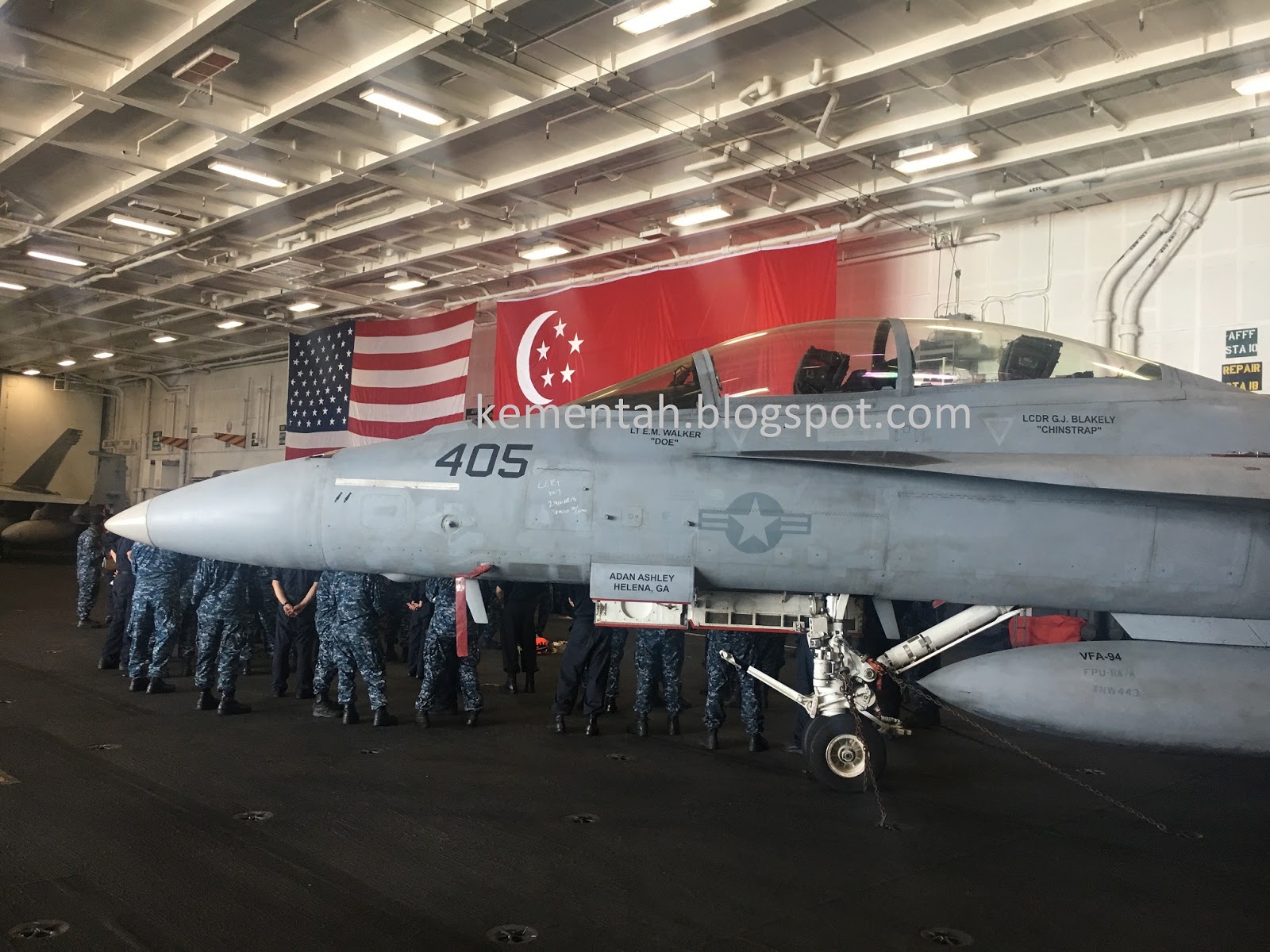
U.S. aircraft carrier calls at Singapore to support Philippines
Nuclear-powered USS Carl Vinson projects might amid South China Sea dispute

SINGAPORE -- U.S. aircraft carrier, the USS Carl Vinson, docked in Singapore this week, in a display of America's military prowess in Southeast Asia amid a spat between China and the Philippines in nearby disputed waters.
U.S. Navy vessels call at Singapore, a close partner in the region, from time to time, and officials described the visit as part of "daily routine global operations." But the nuclear-powered Vinson, which docked on Sunday, has arrived at a particularly sensitive time. Chinese and Philippine vessels have been embroiled in skirmishes in the nearby South China Sea, raising the risk of escalating conflict.
U.S. Navy personnel would not comment on where the Vinson was headed after its Singapore call, which reporters were invited to cover on Tuesday. Vinson was accompanied by other vessels under America's "Carrier Strike Group One" fleet that includes a missile cruiser and guided-missile destroyers, usually based in California when they are not globe-trotting on missions.
"Questions of foreign policy and future operations, I would refer those questions to our higher headquarters," said Rear Adm. Carlos Sardiello. "I can tell you Carrier Strike One has trained and rehearsed to be ready, both lethal, survivable, and we're able to conduct our full range of operations in support of higher headquarters tasking."
The U.S. has repeatedly committed to defending the Philippines as a treaty ally, although their 1951 mutual defense pact covers "an armed attack" which does not include incidents involving the use of water cannons and collisions.
Chinese and Philippine vessels have confronted each other in waters not far from Singapore recently. Earlier this month, the Philippines claimed that a Chinese vessel used water cannons and rammed Manila's ships headed to a resupply mission at Ayungin Shoal in the Spratly Islands.
This followed an incident earlier when Chinese Coast Guard ships were accused of using water cannons against Philippine civilian vessels near Scarborough Shoal. Both countries have competing claims in the South China Sea where the episodes occurred.
China asserts historical rights to nearly all of the South China Sea and rejects Manila's own maritime claims. Beijing has defied a 2016 ruling by an international tribunal in the Hague that denied Beijing's historical claim.
The Philippines gives the Americans military access to nine sites across the archipelago. This arrangement is meant to enable the U.S. to not only provide disaster relief and humanitarian assistance quickly but also respond to contingencies in the South China Sea.
Carrier Strike Group One in Southeast Asia, prominently led by a nuclear-powered carrier and a symbol of American military might, had sailed to Singapore from South Korea where it called in November, amid tensions around North Korea's planned launch of a rocket carrying a space satellite.
"This team -- Carrier Strike Group One -- is ready and we are here conducting security operations in the region," said Sardiello. "It is a powerful symbol of our resolve as a U.S. navy to commit to free and open use of maritime commons in the face of coercion or aggression -- we're not going anywhere."
The last time such a U.S. carrier visited Singapore was when the USS Nimitz docked in January. Before that, aircraft carrier USS Ronald Reagan visited the city-state in July 2022 but had to make a quick U-turn to the Philippine Sea to protect House Speaker Nancy Pelosi who visited Taiwan, despite objections from China, in early August 2022.








No comments:
Post a Comment
Note: Only a member of this blog may post a comment.